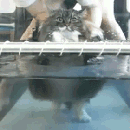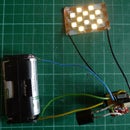Introduction: DIY WIFI Antenna Reception Booster
Instruction for your very own WIFI antenna reception booster, the design is a parabolic trough antenna ( http://en.wikipedia.org/wiki/Parabolic_trough ).
Simply download the PDF and cut out the template, a bit of 'pre-school' level assembling, aluminium foil and cotton glue all you need.
Note: The PDF is in A4 format, if you're printing in Letter format, remember to keep to the same aspect ratio, ideally use the 'fit to page' feature available on most printers. With that in mind, you should be able to scale up to a much larger version, on a A3 printer.
The image below shows the finished product.
Attachments
Step 1: Another Example of a Finished Product.
Here's one done by a plucky 5 year old (Essential tools include a pair of safety scissors)
Step 2: Another Example of a Finished Product.
This one is made from a skinny plastic folder, cut from the template of a printout














